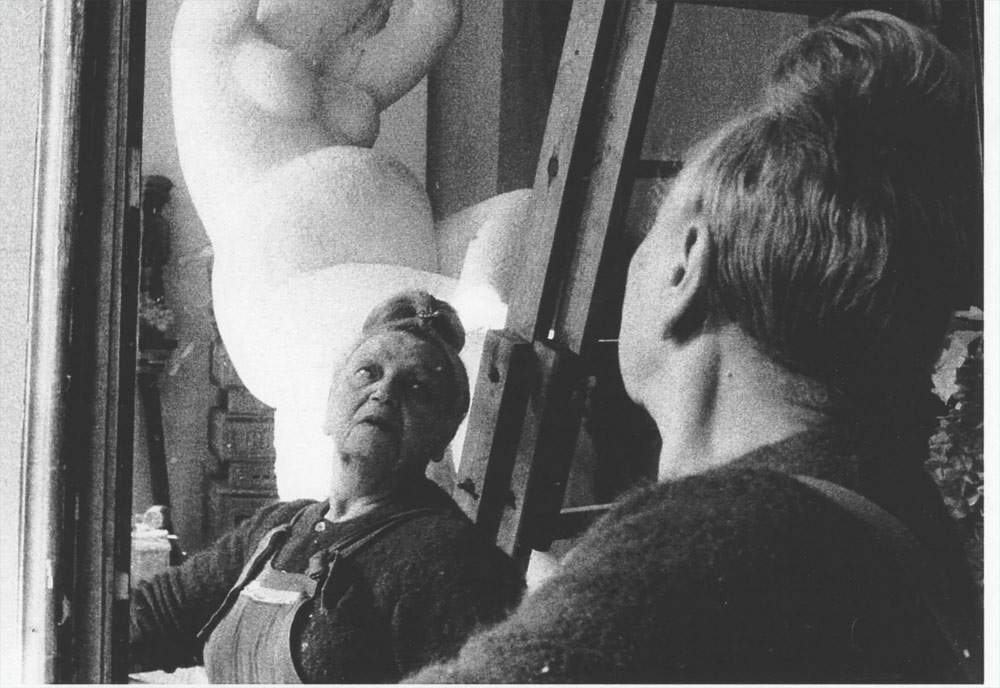Until January 30, 2022, the National Gallery of Modern and Contemporary Art in Rome is hosting an exhibition on Antonietta Rap haël (Kaunas, 1895 - Rome, 1975), entitled Antonietta Raphaël. Through the Looking Glass, curated by Giorgia Calò and Alessandra Troncone and promoted in collaboration with the Lithuanian Cultural Institute and the Embassy of Lithuania in Italy. It is a retrospective that offers the public a lunge into the figure of Antoinette Raphaël, an artist of Lithuanian origin and among the major names of the Roman School, through a selection of paintings, sculptures and works on paper, as well as documents, family photographs, letters and pages from her diaries. Also featured in the exhibition are works by Mario Mafai (Rome, 1902 - 1965), another great artist of the Roman School and Antonietta’s husband. Complementing this is an unpublished documentary made especially for the exhibition.
The title of the exhibition, Attraverso lo specchio (Through the Looking Glass), refers to Raphaël’s aptitude for transforming artistic practice into a tool for investigating her own inner world, and evokes dreamlike and imaginative dimensions in which the female figure is the protagonist. The mirror, understood as self-representation, splitting, and a threshold to be crossed, thus becomes the guiding thread of a path that explores the artist’s rich production, with a series of thematic nuclei identified by the curators. Another leading theme is that ofself-portraiture, a practice that marks all of Antoinette Raphaël’s production and focuses on the theme of identity explored by the artist through self-telling. Numerous self-portraits see her at work with her work tools, such as Self-Portrait with Blue Overalls from the 1940s, which introduces the artist’s “alternative” look at her work and sculpture.
Still, other themes explored by the exhibition are those of femininity and motherhood: several times, in her writings, Antoinette Raphaël likens woman to God for the ability to “create something out of nothing.” In the exhibition it will be possible to explore these concepts with some works such as the portraits dedicated to her daughters Miriam, Simona and Giulia, the Three Sisters to whom the 1936 sculpture of the same name, part of the National Gallery’s collection, is dedicated. Again, Jewish origins, another major presence in the artist’s work, the subject of numerous works that offer new insights into female representation particularly through the figures of Judith and Tamar, are explored in depth in the exhibition: biblical heroines, independent and strong-willed women capable of declining grace and beauty into strength and combat and of subverting with their actions a context dominated by patriarchal logic. Finally, the exhibition also offers a focus on Antoinette Raphaël’s entourage A section of the exhibition in fact explores the artist’s relationships with crucial figures and personalities of her time: artists Giacomo Manzù, Renato Guttuso, Katy Castellucci, and Helenita Olivares, but also patrons and collectors who supported her practice.
“This exhibition,” says the director of the National Gallery, Cristiana Collu, “gives back the fragments of a very articulate body of work and of an intense, full, industrious life devoted to art. It tells of an artist who spoke the truth, in an Olympian way, an animal without illusions, with ferocity and with determination, that which she spent in the struggles of her nightmares (always defined as dreams) and that which she lavished on shaping matter, as hard as that of stone and rosewood or as tender as clay or color paste on canvas.”
For information you can visit the National Gallery website.
 |
| Rome, an exhibition at the National Gallery traces the career of Antoinette Raphaël |
Warning: the translation into English of the original Italian article was created using automatic tools. We undertake to review all articles, but we do not guarantee the total absence of inaccuracies in the translation due to the program. You can find the original by clicking on the ITA button. If you find any mistake,please contact us.